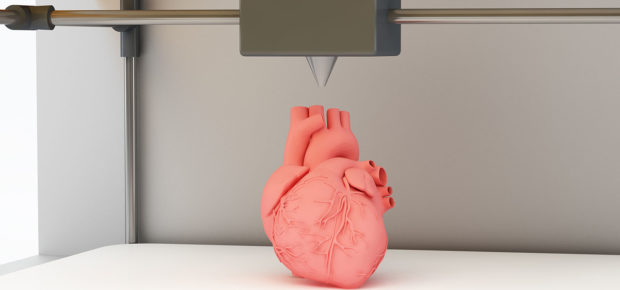NASA To Apply The 3D Printing Tech To Manufacture Hearts In Space
Anita - Jan 23, 2019

This combination of medicine and space sounds like science fiction, but it could bring new hope for transplant patients in the future.
- Russia Will Build A Lunar Space Station With China Because It's Done With NASA
- NASA Reveals 20 Most Stunning Earth Images Taken From The ISS
- India’s First 3D-Printed Building With Indigenous Construction Materials
To reduce the number of people on waiting lists for organ donation, scientists are even seeking in the outer space. That's why many doctors have made efforts to print lab-grown organs with 3D printing techniques. The results showed that organs whose internal structures are complex like lungs and hearts are likely to collapse during the process.

The news from BBC News shows that, instead of using the complex scaffolding systems to support them, scientists are considering bringing a 3D printer to the International Space Station’s weightless environment to create 3D-printed images of hearts. This combination of medicine and space sounds like science fiction, but it could bring new hope for transplant patients in the future.
Various researchers have already suggested 3D printing with the microgravity. Recently, a space tech company Techshot in coordination with NASA has developed a 3D bio-printer which will be sent to the ISS, scheduled for May this year.
Initially, Techshot plans to do experiments in around a year to check the printer’s ability when working in space. At that time, it will pay more attention to printing heart tissues.

In an interview with BBC News, Techshot’s Vice President Rich Boling said:

As soon as the company completes all the tests, it will make any necessary modifications to optimise the 3D printer. Later, Techshot will send it back to manufacture even more highly complicated tissues in space.
Once everything works, the company hopes to produce various complex organs including hearts for transplant patients. In addition to the fact that they could reduce waitlist times, the company also expects that the printed organs using a patient’s own stem cells will enhance the probability in accepting new organ of the recipient’s body.
Featured Stories

Features - Jul 01, 2025
What Are The Fastest Passenger Vehicles Ever Created?

Features - Jun 25, 2025
Japan Hydrogen Breakthrough: Scientists Crack the Clean Energy Code with...

ICT News - Jun 25, 2025
AI Intimidation Tactics: CEOs Turn Flawed Technology Into Employee Fear Machine

Review - Jun 25, 2025
Windows 11 Problems: Is Microsoft's "Best" OS Actually Getting Worse?

Features - Jun 22, 2025
Telegram Founder Pavel Durov Plans to Split $14 Billion Fortune Among 106 Children

ICT News - Jun 22, 2025
Neuralink Telepathy Chip Enables Quadriplegic Rob Greiner to Control Games with...

Features - Jun 21, 2025
This Over $100 Bottle Has Nothing But Fresh Air Inside

Features - Jun 18, 2025
Best Mobile VPN Apps for Gaming 2025: Complete Guide

Features - Jun 18, 2025
A Math Formula Tells Us How Long Everything Will Live

Features - Jun 16, 2025
Comments
Sort by Newest | Popular